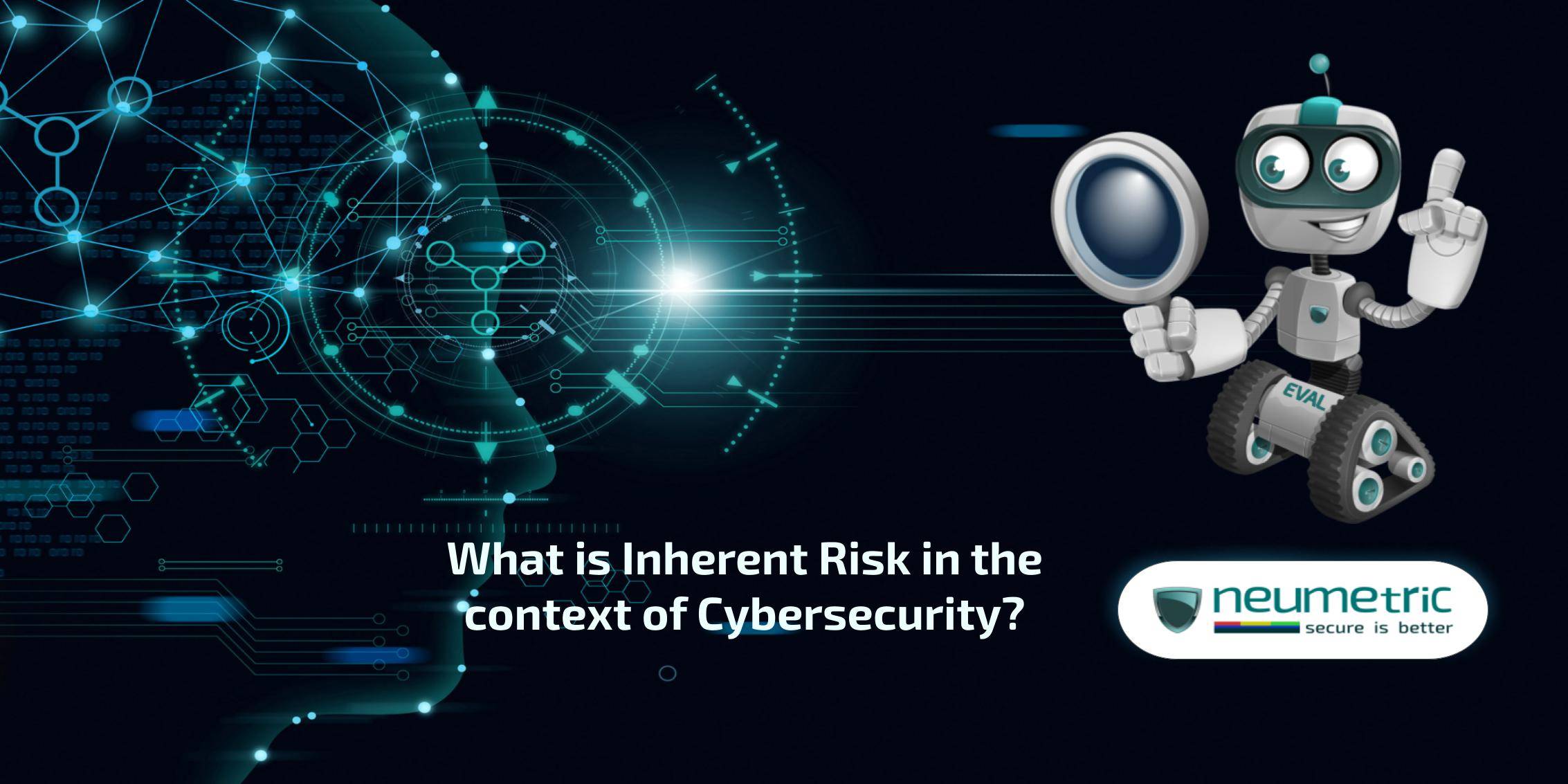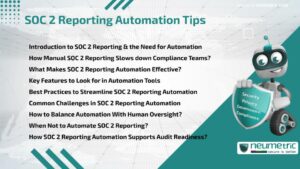Table of Contents
ToggleWhat is Inherent Risk in the context of Cybersecurity?
Introduction
The idea of inherent risk has come to be seen as crucial for businesses of all kinds to take into account. Businesses must face this inherent vulnerability—an unavoidable result of technology advancement—head-on in order to avoid becoming victims of hostile actors’ persistent assault & the disastrous outcomes that ensue.
The phenomena is complex & includes a wide range of potential threats & vulnerabilities that are intricately linked to the very systems & procedures that make it possible for modern enterprises to prosper. It is the innate vulnerability that is present in any organization using digital technology even in the absence of controls or countermeasures.
The Ubiquitous Presence of Inherent Risk
From the moment a company establishes its online presence, it becomes exposed to a multitude of inherent risks, ranging from data breaches & cyber-attacks to system failures & human errors. These risks permeate every aspect of an organization’s operations, lurking in the shadows of even the most seemingly innocuous activities.
Whether it’s the storage & transmission of sensitive data, the deployment of software applications or the integration of third-party services, inherent risk is an ever-present specter, waiting to strike at the slightest lapse in vigilance or oversight.
The Multifaceted Nature of Inherent Risk
To truly grasp the complexity of inherent risk in cybersecurity, it is essential to understand its multifaceted nature. This phenomenon encompasses a wide array of potential vulnerabilities & threats, each with its own unique characteristics & implications.
Technological Vulnerabilities
At the core of inherent risk lie the technological vulnerabilities that are an inherent part of the systems & software upon which modern businesses rely. As technology evolves at a breakneck pace, new vulnerabilities emerge, often faster than they can be patched or mitigated. Software vulnerabilities, outdated systems & legacy infrastructure all contribute to an organization’s inherent risk profile, creating potential entry points for malicious actors to exploit.
These vulnerabilities can arise from a myriad of sources, including coding errors, design flaws & inadequate security testing. In some cases, they may even be intentionally introduced by malicious actors through supply chain attacks or the insertion of backdoors.
Human Factors
Despite the best efforts of security professionals, human error remains a significant source of inherent risk in cybersecurity. From inadvertent data leaks & social engineering attacks to accidental misconfigurations & insider threats, the human element remains a constant challenge in the realm of cybersecurity.
Whether it’s the result of carelessness, negligence or malicious intent, human factors can undermine even the most robust security measures, exposing organizations to a wide range of potential threats. Social engineering attacks, in particular, exploit the natural human tendencies of trust & helpfulness, making them a potent weapon in the hands of cybercriminals.
Regulatory & Compliance Risks
Organizations must navigate a complex web of laws, regulations & industry standards, each with its own set of requirements & consequences for non-compliance. Failure to adhere to these guidelines can result in hefty fines, legal repercussions & reputational damage, adding yet another layer to the inherent risk landscape.
Compliance risks can arise from a variety of sources, including data privacy regulations, industry-specific standards & corporate governance requirements. As these regulations evolve & become more stringent, organizations must continuously adapt their security practices & ensure ongoing compliance, lest they face severe penalties & legal repercussions.
Third-Party Vulnerabilities
In the interconnected world of business, organizations often rely on third-party vendors, partners & suppliers, each with their own inherent risks. A breach or vulnerability in any of these external entities can have ripple effects throughout the entire supply chain, amplifying the inherent risk faced by the organization.
Third-party vulnerabilities can stem from a variety of sources, including inadequate security practices, outdated systems or even intentional data breaches. As organizations increasingly rely on external services & integrations, the need to carefully vet & monitor these third-party relationships becomes extremely important.
Geopolitical & Cyber Warfare Risks
In the ever-shifting geopolitical landscape, organizations must also contend with the inherent risks posed by cyber warfare & state-sponsored attacks. Nation-states & their proxies may target businesses for a variety of reasons, including espionage, sabotage or retaliation, posing a significant threat to organizations’ cybersecurity posture.
These attacks can take many forms, ranging from sophisticated malware campaigns to Distributed Denial-of-Service [DDoS] attacks & can be challenging to detect & mitigate due to the resources & expertise available to nation-state actors.
Embracing Inherent Risk: A Proactive Approach
While inherent risk cannot be eliminated entirely, it can be effectively managed through a proactive & comprehensive cybersecurity strategy. This approach involves several key components:
Risk Identification & Assessment
The first step in managing inherent risk is to identify & assess the specific vulnerabilities & threats faced by the organization. This process involves conducting regular risk assessments, analyzing potential attack vectors & prioritizing risks based on their likelihood & potential impact.
Effective risk identification & assessment require a deep understanding of the organization’s assets, processes & dependencies, as well as a thorough knowledge of the threat landscape & emerging attack techniques. This process should be an ongoing effort, as new risks can emerge at any time due to changes in technology, regulations or geopolitical factors.
Implementing Robust Security Controls
Once the inherent risks have been identified & assessed, organizations must implement robust security controls & countermeasures to mitigate these risks. This can include deploying firewalls, intrusion detection systems [IDS], encryption technologies, access controls (ex: RBAC) & employee training programs, among other measures.
The selection & implementation of security controls should be guided by industry best practices, regulatory requirements & a thorough understanding of the organization’s risk appetite & tolerance levels. It is also essential to ensure that these controls are regularly tested & updated to maintain their effectiveness against evolving threats.
Continuous Monitoring & Adaptation
Inherent risk is not a static phenomenon; it evolves continuously as new threats emerge & technologies advance. As such, organizations must remain on the lookout, continuously monitoring their risk landscape & adapting their security strategies accordingly.
Regular software updates, vulnerability scans & incident response planning are crucial components of this ongoing process. Additionally, organizations should stay abreast of emerging threats, industry best practices & regulatory developments, adjusting their security posture as necessary to maintain an effective defense against evolving risks.
Fostering a Culture of Security Awareness
Effective cybersecurity is not solely the responsibility of IT professionals; it requires a company-wide commitment to security awareness & best practices. By fostering a culture of security awareness through employee training, clear policies & open communication, organizations can significantly reduce the inherent risks associated with human factors.
Security awareness programs should emphasize the importance of strong passwords, secure data handling practices & vigilance against social engineering attacks. Additionally, organizations should establish clear incident response protocols & encourage employees to report any suspected security incidents or suspicious activities promptly.
The Cost of Complacency: Consequences of Ignoring Inherent Risk
The consequences of ignoring or underestimating inherent risk in cybersecurity can be severe & far-reaching. Data breaches, system failures & cyber-attacks can result in significant financial losses, reputational damage & legal consequences, jeopardizing the very survival of an organization.
Perhaps the most severe consequence of a cybersecurity incident is the potential for data breaches, which can lead to the exposure of sensitive information, such as customer records, financial data & intellectual property. In addition to the direct financial costs associated with remediation & legal fees, data breaches can also result in severe reputational damage, eroding customer trust & potentially leading to long-term revenue losses.
System failures & operational disruptions are another potential consequence of inadequate inherent risk management. Cyber-attacks, such as Distributed Denial-of-Service [DDoS] attacks or ransomware infections, can cripple an organization’s ability to conduct business, resulting in lost productivity, revenue losses & potentially irreparable damage to critical systems & data.
Moreover, the consequences of ignoring inherent risk can extend beyond the affected organization, impacting customers, partners & even entire industries. In an interconnected world, a single breach can compromise sensitive data, disrupt supply chains & erode public trust, underscoring the importance of proactive risk management.
Embracing Inherent Risk: A Journey, Not a Destination
Inherent risk in cybersecurity is not a challenge to be solved once & for all; it is a journey that requires continuous adaptation & vigilance. As technology evolves & new threats emerge, organizations must remain agile, proactive & committed to staying ahead of the curve.
By embracing inherent risk as an unavoidable aspect of the digital landscape & implementing robust, proactive strategies to manage & mitigate these risks, organizations can not only protect themselves but also foster a culture of resilience & preparedness, ensuring their long-term success in an ever-changing cybersecurity environment.
This journey necessitates a holistic approach, one that encompasses all aspects of an organization’s operations, from technology & processes to people & culture. It requires a deep understanding of the threat landscape, a commitment to continuous improvement & a willingness to invest in the necessary resources & expertise to stay ahead of emerging risks.
Moreover, it is crucial to recognize that inherent risk management is not a one-size-fits-all endeavor. Each organization has its own unique risk profile, shaped by factors such as its industry, size & operational complexity. As such, effective risk management strategies must be tailored to the specific needs & circumstances of the organization, taking into account its risk appetite, regulatory environment & strategic objectives.
Conclusion
Any company that operates in the digital space must constantly contend with inherent risk, which is an unavoidable fact. However, businesses may not only safeguard themselves but also promote a culture of resilience & readiness by accepting this inherent vulnerability & implementing a proactive, all-encompassing approach to risk management.
It is imperative that we understand that inherent risk is a journey that calls for constant adaptation & attention rather than a problem that needs to be fixed once & for all as we traverse the complexity of the digital age. Organizations may efficiently manage inherent risk & protect their operations, data & reputation by staying ahead of emerging threats, putting strong security controls in place & encouraging a commitment to security awareness throughout the whole organization.
Ultimately, inherent risk serves as a wake-up call, reminding us that the biggest vulnerability in the constantly evolving field of cybersecurity is complacency. Organizations may secure their position as resilient & forward-thinking leaders in the continuous fight against cyber threats by embracing inherent risk & proactively addressing its multiple problems.
Effective inherent risk management is a journey that calls for unwavering dedication, never-ending learning & a thorough comprehension of the dynamic threat landscape. The digital world is changing all around us, therefore this is a journey that calls for cooperation, creativity & a readiness to change & adapt.
Organizations can safeguard themselves & cultivate a culture of resilience & preparedness by accepting inherent risk as a fundamental feature of the digital age & taking proactive measures to address its multifarious challenges. This will ensure their long-term success in a cybersecurity environment that is constantly evolving.
Key Takeaways
- Inherent risk is an inevitable byproduct of interconnectivity & technological advancement & it encompasses a wide range of potential vulnerabilities & threats.
- Effective inherent risk management requires a proactive & comprehensive approach that includes risk identification & assessment, robust security controls, continuous monitoring & adaptation & a culture of security awareness.
- Ignoring or underestimating inherent risk can have severe consequences, including data breaches, financial losses, reputational damage & legal repercussions.
- Real-world examples, such as the Equifax data breach, WannaCry ransomware attack & SolarWinds supply chain attack, highlight the grave implications of failing to manage inherent risk adequately.
- Inherent risk management is an ongoing journey that requires continuous adaptation & vigilance, as technology evolves & new threats emerge.
- The future of inherent risk management will be shaped by emerging technologies, such as AI, IoT & quantum computing, as well as increased collaboration & information sharing among organizations & stakeholders.
Frequently Asked Questions [FAQ]
What is the difference between inherent risk & residual risk?
Inherent risk refers to the vulnerability that exists before any controls or countermeasures are implemented, while residual risk is the risk that remains after all controls & countermeasures have been applied. Residual risk is the risk that an organization must accept & manage as part of its ongoing operations.
Can inherent risk be completely eliminated?
No, inherent risk cannot be completely eliminated. It is an inevitable byproduct of interconnectivity & technological advancement. However, it can be effectively managed & mitigated through a comprehensive cybersecurity strategy that involves risk assessment, robust security controls, continuous monitoring & a culture of security awareness.
How does inherent risk differ across industries or organizations?
The inherent risk profile of an organization can vary significantly based on factors such as the industry, size, complexity of operations & the nature of the data & systems involved. For example, organizations that handle sensitive data or operate in highly regulated industries, such as healthcare or finance, may face higher levels of inherent risk due to the potential consequences of a data breach or non-compliance.
What role do third-party vendors & partners play in inherent risk?
Third-party vendors, partners & suppliers can introduce additional inherent risks to an organization. A breach or vulnerability in any of these external entities can have ripple effects throughout the entire supply chain, amplifying the inherent risk faced by the organization. Proper due diligence, ongoing monitoring & robust security measures for third-party relationships are crucial components of inherent risk management.
How can organizations stay ahead of evolving inherent risks?
To stay ahead of evolving inherent risks, organizations must adopt a proactive & continuous approach to cybersecurity. This includes regular risk assessments, continuous monitoring, software updates, vulnerability scans, employee training, incident response planning & staying abreast of emerging threats, industry best practices & regulatory developments. Additionally, organizations should embrace innovation & leverage advanced technologies, such as machine learning & blockchain, to enhance their security posture.





